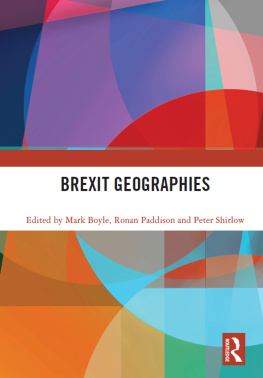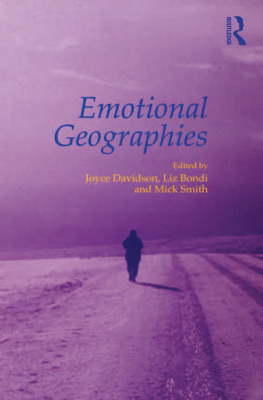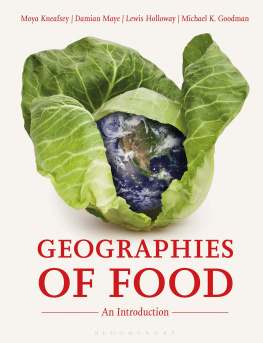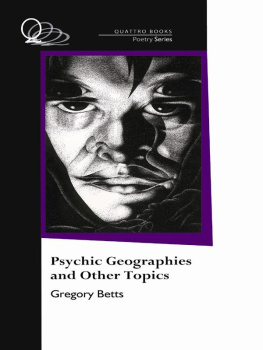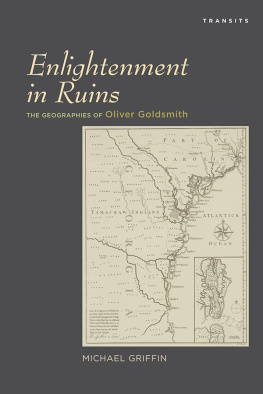Watson Jay - Faulkners Geographies
Here you can read online Watson Jay - Faulkners Geographies full text of the book (entire story) in english for free. Download pdf and epub, get meaning, cover and reviews about this ebook. year: 2015, publisher: University Press of Mississippi, genre: Politics. Description of the work, (preface) as well as reviews are available. Best literature library LitArk.com created for fans of good reading and offers a wide selection of genres:
Romance novel
Science fiction
Adventure
Detective
Science
History
Home and family
Prose
Art
Politics
Computer
Non-fiction
Religion
Business
Children
Humor
Choose a favorite category and find really read worthwhile books. Enjoy immersion in the world of imagination, feel the emotions of the characters or learn something new for yourself, make an fascinating discovery.

- Book:Faulkners Geographies
- Author:
- Publisher:University Press of Mississippi
- Genre:
- Year:2015
- Rating:5 / 5
- Favourites:Add to favourites
- Your mark:
- 100
- 1
- 2
- 3
- 4
- 5
Faulkners Geographies: summary, description and annotation
We offer to read an annotation, description, summary or preface (depends on what the author of the book "Faulkners Geographies" wrote himself). If you haven't found the necessary information about the book — write in the comments, we will try to find it.
Faulkners Geographies — read online for free the complete book (whole text) full work
Below is the text of the book, divided by pages. System saving the place of the last page read, allows you to conveniently read the book "Faulkners Geographies" online for free, without having to search again every time where you left off. Put a bookmark, and you can go to the page where you finished reading at any time.
Font size:
Interval:
Bookmark:
Faulkners Geographies
FAULKNER AND YOKNAPATAWPHA
2011
FAULKNER AND YOKNAPATAWPHA, 2011
EDITED BY
JAY WATSON
AND
ANN J. ABADIE

www.upress.state.ms.us
The University Press of Mississippi is a member
of the Association of American University Presses.
Copyright 2015 by University Press of Mississippi
All rights reserved
Manufactured in the United States of America
First printing 2015
Library of Congress Cataloging-in-Publication Data
Faulkner and Yoknapatawpha Conference (38th : 2011 : University of Mississippi)
Faulkners geographies : Faulkner and Yoknapatawpha, 2011 / edited by Jay Watson, Ann J. Abadie.
pages cm. (Faulkner and Yoknapatawpha series)
Summary: The recent spatial turn in social theory and cultural studies opens up exciting new possibilities for the study of William Faulkners literature. The fictional domains of Yoknapatawpha County and Jefferson, Mississippi, are not simply imagined communities but imaginative geographies of remarkable complexity and detail, as evidenced by the maps Faulkner created of his apocryphal county. Exploring the diverse functions of space in Faulkners artistic vision, the eleven essays in Faulkners Geographies delve deep into Yoknapatawpha but also reach beyond it, to uncover unsuspected connections and flows linking local, regional, national, hemispheric, and global geographies in Faulkners writings. Individual contributions examine the influence of the plantation as a land-use regime on Faulkners imagination of north Mississippis geography; the emergence of micro-Souths as a product of modern migratory patterns in the urban North of Faulkners fiction; the enlistment of the authors work in the geopolitics of the cultural Cold War during the 1950s; the historical and literary affiliations between Faulkners Deep South and Greater Mexico; the local and idiosyncratic as alternatives to region and nation; the unique intersection of regional and metropolitan geographies that Faulkner encountered as a novice writer immersed in the literary culture of New Orleans; the uses of feminist geography to trace the interplay of gender, space, and movement; and the circulation of Caribbean and Black South spaces and itineraries through Faulkners masterpiece, Absalom, Absalom! By bringing new attention to the function of space, place, mapping, and movement in his literature, Faulkners Geographies seeks to redraw the very boundaries of Faulkner studies Provided by publisher.
Includes bibliographical references and index.
ISBN 978-1-4968-0227-9 (hardback) SBN 978-1-4968-0228-6 (ebook) 1. Faulkner, William, 18971962Criticism and interpretationCongresses. 2. Yoknapatawpha County (Imaginary place)Congresses. 3. Geography in literatureCongresses. 4. Geographical perception in literatureCongresses. 5. Space in literatureCongresses. 6. Geopolitics in literatureCongresses. I. Watson, Jay, editor. II. Abadie, Ann J., editor. III. Title.
PS3511.A86Z78321135 2015 | |
813.52dc23 | 2014042295 |
British Library Cataloging-in-Publication Data available
In Memoriam,
Louis Daniel Brodsky
April 17, 1941June 16, 2014
Betty Zachry Harrington
June 20, 1928October 22, 2011
Albert Murray
May 12, 1916August 18, 2013
Stephen M. Ross
November 28, 1943August 21, 2013
Louis D. Rubin
November 19, 1923November 16, 2013
JAY WATSON
BARBARA LADD
SCOTT ROMINE
JOHN SHELTON REED
BENJAMIN S. CHILD
KITA DOUGLAS
JOS E. LIMN
RYAN HERYFORD
VALRIE LOICHOT
FARAH JASMINE GRIFFIN
HARILAOS STECOPOULOS
LORIE WATKINS
In the beginning, writes Henri Lefebvre, was the Topos.
One reason Yoknapatawpha County looms so large in the story of Faulkners success is thatalone among the numerous global locales he explored in his fictionhe literally mapped it. Twice. Once for the endpapers of Absalom, Absalom! in 1936, and then, with important additions, deletions, and variations, for Malcolm Cowleys Portable Faulkner volume in 1946. In promoting and interpreting his own work, then, Faulkner intuitively turned to geographys preeminent mode of knowledge production. Geographer Charles S. Aiken suggests that with these acts of cartographic mapping, Faulkner began to come to grips with the larger geographic setting of his stories, that, in other words, his maps didnt just provide a referential visual schema for an area somehow prior and complete in his imagination but more actively shaped the ways in which he subsequently understood and used that space. Or, as geographer Mark Monmonier more forcefully puts it, they must lie. Monmonier calls this the cartographic paradox: maps cannot reveal without concealing, distorting.
What, then, do Faulkners maps reveal? What do they conceal? Turning briefly to the first question, we could follow Aiken in suggesting that they reveal the workings of an open, fluid, and very contemporary geographic imagination. Yoknapatawpha represents only a tiny section of the globe, 2,400 square miles according to Faulkners legend, but it is by no means an insular one. As Aiken notes, Faulkner considered the Tallahatchie and Yoknapatawpha rivers boundaries of his county. But significantly, no boundaries are shown on the two maps of the county that he drew (55). In this way, the maps signal that the countys residents and visitors reach toward other areas and operate within a broader spatial context, one that the fictional narratives extend to such places as New Orleans, the Mississippi Delta, Memphis, Chicago, the Appalachian Mountains, Cambridge, the Caribbean, and the battlefields of Europe. Yoknapatawpha may be a place with a core, as Aiken puts it, but the county has no isolating walls. It participates actively in a regional, national, and global landscape of mobility, exchange, and flow, what the Martinican novelist and critic douard Glissant might have called a geography of relation.
And what of the lies these maps tell? We could point to telltale omissions like the puzzling absence of Dewey Dell Bundren from all references on the Absalom map to the funeral journey made by Anse Bundren and his sons or Anse Bundren and his boys to Jefferson.of geographic disinformation that mystifies the historical character of the plantation and ascribes to it instead an elemental, eternal quality as a landscape feature (122).
What Faulkner is doing with these maps, as a reader of his own texts, is more or less the same procedure sketched by Franco Moretti as part of a program of distant reading that downplays the idiosyncrasy of textual elements in favor of a sharper sense of their overall interconnection. Moretti describes this technique as follows:
You choose a unitwalks, lawsuits, luxury goods, whateverfind its occurrences, place them in space... or in other words: you reduce the text to a few elements, and abstract them from the narrative flow, and construct a new, artificial object like the maps that I have been discussing. And with a little luck, these maps will be more than the sum of their parts: they will possess emerging qualities, which were not visible at the lower level.... Not that the map is itself an explanation, of course: but at least, it offers a model of the narrative universe which rearranges its components in a non-trivial way, and may bring some hidden patterns to the surface. (5354)
It would be intriguing, though beyond the scope of this introduction, to reconstruct the primary units of analysis that govern Faulkners map-making projects: homes, farms, and businesses, to be sure, but also, more curiously, sites of death and at least half a dozen crime scenes. For now we can observe that Faulkner shared this cartographic imagination, this mapping impulse, with some of his most memorable characters, who exhibit an intimate feel for and understanding of the spatial contours of their world.
Next pageFont size:
Interval:
Bookmark:
Similar books «Faulkners Geographies»
Look at similar books to Faulkners Geographies. We have selected literature similar in name and meaning in the hope of providing readers with more options to find new, interesting, not yet read works.
Discussion, reviews of the book Faulkners Geographies and just readers' own opinions. Leave your comments, write what you think about the work, its meaning or the main characters. Specify what exactly you liked and what you didn't like, and why you think so.

